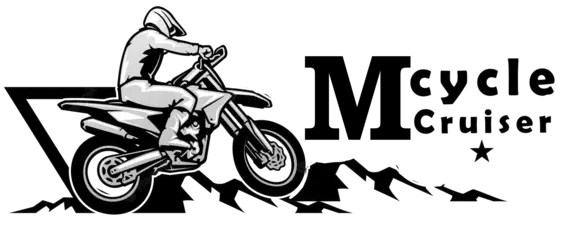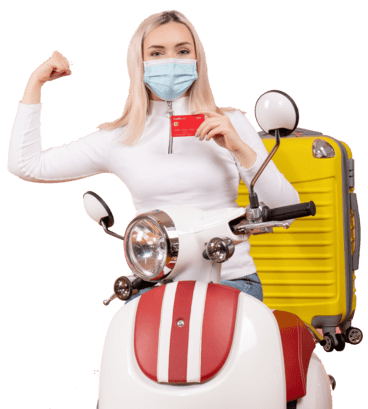Motorcycle cruising is an exhilarating experience, but safety should always be the first priority. In this blog, we’ll delve into essential safety tips every cruiser rider should adhere to for a safe and enjoyable ride.
Gear Up
Never underestimate the importance of proper gear when riding a cruiser. A helmet, gloves, a riding jacket, and boots are a must. They protect you from road debris, harsh weather conditions, and injuries in case of accidents.
The Importance of a Good Helmet
A helmet is not just a piece of gear, it’s an essential safeguard for your most valuable asset—your head. Investing in a high-quality helmet can drastically decrease the risk of serious injury in case of an accident. Ensure that your helmet fits well, is comfortable and meets the safety standards set by your local authorities.
Wear Protective Clothing
Protective clothing is not just about looking the part; it’s crucial in minimizing injury during accidents. Opt for motorcycle-specific jackets and pants made from abrasion-resistant material such as leather. They often include built-in armor for additional protection. Gloves to protect your hands and boots for your feet are also essential, along with reflective gear for visibility during night rides.
Regular Maintenance Checks
Performing regular maintenance checks on your cruiser is crucial. Check the brakes, lights, tire pressure, and oil levels before you hit the road. Regular servicing will ensure your motorcycle is in top condition and safe to ride.
Check Your Lights
Proper functioning of your motorcycle lights – headlights, brake lights, and turn signals – is crucial for your safety on the road. They not only allow you to see the road clearly but also make you visible to other road users. Always check the condition of your lights before you embark on your ride.
Don’t Forget About Tire Pressure
Tire pressure significantly impacts your motorcycle’s handling. Underinflated tires can overheat, causing unstable handling, while overinflated ones can lead to a harsh ride and excessive wear in the center of the tire. Always ensure your tires are inflated to the manufacturer’s recommended pressure levels for optimal performance and safety.
Ride Defensively
Always be alert and aware of your surroundings. Remember, you are smaller and less visible compared to other vehicles. Keep a safe distance, use your signals, and never assume other drivers can see you.
Stay Visible
When riding, make sure you’re easily visible to other drivers. Use your motorcycle’s headlights, even in daylight, and wear brightly colored gear. Avoid other vehicles’ blind spots, and ensure you’re seen before you change lane or direction.
Maintain Safe Distance
It’s crucial to maintain a safe following distance to give yourself enough time to react to sudden stops or changes in direction from vehicles in front of you. As a rule of thumb, maintain a two-second gap between you and the vehicle ahead.
Anticipate Hazards
Be proactive and anticipate potential hazards before they become a threat. Watch out for road signs, irregularities in the road surface, and erratic behavior from other drivers. By staying alert, you can anticipate and react to potential problems ahead of time.
Take a Defensive Riding Course
Consider enrolling in a defensive riding course. These courses teach you advanced riding skills and techniques to safely handle a range of traffic situations, helping you become a safer, more confident cruiser.
Follow Traffic Rules
Adhering to traffic rules is vital for your safety. Understand and respect speed limits, road signs, and signals. Riding responsibly not only protects you but also other road users.
Respect Speed Limits
Speed limits are put in place to ensure the safety of all road users. Adhere to these limits and adjust your speed accordingly based on the road conditions. Remember that faster speeds require longer distances to stop and increase the severity of accidents. Avoid the temptation to speed, especially on open roads.
Understand Road Signs and Signals
Road signs and signals provide vital information about road conditions, potential hazards, and restrictions. Familiarize yourself with common road signs and their meanings. These include stop signs, yield signs, speed limit signs, and traffic signals. Ignoring these signs can lead to dangerous situations and is often a primary cause of road accidents.
Take a Safety Course
Whether you’re a beginner or an experienced rider, a motorcycle safety course can be invaluable. It refreshes your skills and provides up-to-date safety information.
Remember, safety is paramount when you’re on the open road. Be prepared, be aware, and enjoy the ride.
Take a Safety Course
Regardless of your riding experience, taking a motorcycle safety course is a wise decision. These programs offer comprehensive training on safe riding practices, ranging from basic controls to emergency response procedures. They provide both theoretical and practical sessions, enabling riders to learn and apply critical safety measures effectively. This not only boosts your confidence but also increases your ability to make safer decisions on the road. Motorcycle safety courses also stay abreast with the latest rules and regulations, ensuring you are always informed. Remember, being a skilled rider goes beyond knowing how to operate a motorcycle; it involves knowing how to protect yourself and other road users.
Respect the Weather
Weather can be unpredictable, and having respect for its power when on a motorcycle is crucial for a safe ride. Always check the weather forecast before embarking on a trip. If conditions are likely to be poor, it might be best to postpone your ride. If you’re caught in bad weather, find a safe place to take shelter until conditions improve.
Be Mindful of Road Conditions
Road conditions can significantly impact your motorcycle’s performance. Be extra cautious on wet roads, gravelly surfaces, or when navigating through road construction. Potholes, oil slicks, and road debris can pose serious risks to your safety.
Stay Hydrated and Take Breaks
Riding for long periods, especially in hot weather, can lead to dehydration, which may impair your ability to concentrate. Remember to hydrate frequently and take regular breaks to rest and stretch your muscles.
Motorcycle cruising is an adventure that brings unparalleled joy and freedom. By adhering to these safety tips, you ensure not just your safety but also enhance your overall riding experience. Always remember, the thrill of the ride should never overshadow the importance of safety.
In conclusion, motorcycle cruising is not just about the adrenaline rush or the love for the open road, it’s an embodiment of freedom and adventure. Safety, however, should never be compromised for thrills. Your life is precious and so are the lives of others on the road. By adhering to these safety measures, every ride you take will make you a better rider, prepared for the open road, ready for the unexpected, and most importantly, geared up for a safe return home. Remember, the safest risk is the one you didn’t take. Happy and safe riding!


